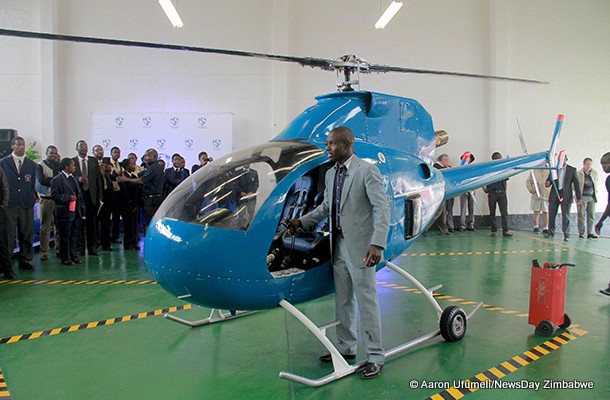Zimbabwean genius inventor makes cars and and other prototypes running from radio frequencies: No one is telling you about this because they’re preserving the fossil fuel energy based monetary system. Lucky enough SABC aired it and unfortunately no one paid attention. Why are we still buying and using oil ?
xxx
We attended the Saith Technologies Open Day where a local inventor, Maxwell Chikumbutso, was exhibiting some of his innovations. We ventured to find out who he is and managed to get some background when he shared his story.
Sangulani (Maxwell) Chikumbutso is a Zimbabwean born serial inventor with the typical I dropped out of school, but I am a genius story, synonymous with some of the successful people we know today.
He is the founder of Saith Technologies. He was born in 1980 and grew up in the high-density suburb of Kuwadzana, Harare, under the care of a single parent as his father walked out on the family.
He completed his primary education at Kuwadzana 5 Primary School and secondary education up to Form 2 at Dzivaresekwa High 2. His education up to this stage was sponsored through Social Welfare until he dropped out.
He started experimenting with technology while in Kuwadzana. At one point, he was profiled on local TV as a prominent young man in Kuwadzana. Maxwell had aspired to become a mechanic, possibly inspired by his father who was a qualified Journeyman.
A devout Christian, Maxwell says that in September of 1997, while praying at a certain mountain he received the scripture in Isaiah 46 from where the name Saith Technologies came, as in “thus saith the Lord”. That is also the time he began receiving strange visions and visible blueprints even though he did not know any electronics at all. He says he learned most of what he knows about electronics from those visions.
In 1999, he built his first successful project which was a Radio broadcast transmitter for which he made the headlines on ZBC news. He started broadcasting, though illegally. The project fell away due to lack of funding.
In 2001, under the mentorship of Rose Mazula, then Broadcasting Association of Zimbabwe Chairperson, he developed what he named the Digital Navigation Facilitator which is used to facilitate landing of aircraft from variables that include the size of the aircraft, its position in altitude, speed and so on.
He took it to the Air Zimbabwe Technical Training Centre where it was assessed and given commendation by aircraft engineers. He says that it became the first addition or modification to Zimbabwean aircraft technology since 1980 even though he himself had never been in an aeroplane.
He took the invention to Air Force of Zimbabwe were the squadron leader and technical team assessed the technology and confirmed that it worked. However, due to lack of financial support the project just fell away.
A few years later, he met up with a Lawyer, Bruce Mujeyi, who introduced Maxwell to the idea of patents which was by then to him an unfamiliar subject. Bruce bought into Maxwell’s vision, volunteered to register patent for free and started providing financing for projects.
In 2003, Maxwell began to get ideas on creating a self-powered generator. Through Bruce, Maxwell interfaced with some prominent professors in Zimbabwe who told him that it was impossible to create such a machine.
He, however, pursued his idea financing it with the little money he got as a haulage truck driver. By 2009, the first prototype of the Greener generator began to work generating 1,200 Watts, but still no one was interested in funding the project.
In 2009, Maxwell was invited by the Government of Lesotho to do a presentation of his project. He was offered a $1,2 million dollar deal but turned it down after he met with Zach Wazara, former Econet CEO and founder of Brodacom.
Maxwell says together they formed a partnership and he became influential in the building of failed telecoms company Brodacom. At Brodacom, he invented what he says is the first WiFi Meshing technology in Zimbabwe with self-organising base stations among other projects.
Under the partnership, the second Greener power prototype was developed and generated 50 Kilowatts. In 2007 Maxwell says they failed to find an attorney who was able to file a patent for the Greener Power because it violates the present day natural laws of physics.
Instead, patent examiners proposed classifying it as a perpetual motion device. Zimbabwe and South Africa likewise failed to patent the invention. Max and Clerks, a leading law firm in the UK who handle Motorola and Samsung patent registrations were supposed to come and inspect a bigger prototype but unfortunately Wazara’s business began facing challenges and he could not continue funding. Still, Maxwell went on to build 3 machines that successfully powered his mother’s house in Kuwadzana.
An opportunity arose in South Africa where Johannesburg City Power invited tenders for new and renewable energy solutions. Among the bidders, Maxwell was the only individual. In spite of that, he performed exceptionally but unfortunately, he lost the opportunity because the awarding director wanted a portion of shares in the company in exchange for his grant.
He also turned down a buyout from an unnamed European Institute at around the time that he met with Angolan born pastor and businessman Dr Teddy De Almeida in Johannesburg.
Dr Almeida owns one of the biggest energy companies in Angola under the Bongani Group. He bought into Maxwell’s vision and contributed over $500,000 seed money desiring no return for his investment. No documents signed, just a stern warning to use the money wisely. Eventually when the Greener Machine was eventually completed and he invited Dr Almeida to take up equity in Saith Technologies.
Source: Techzim





